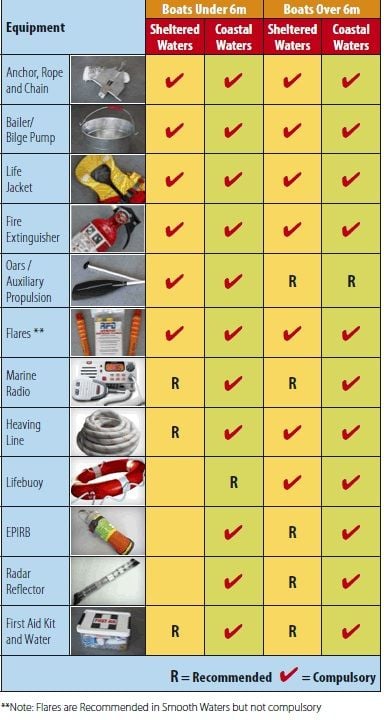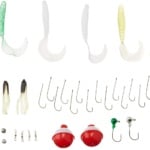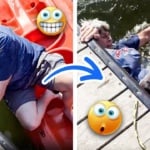So you’ve got your boat ready for a day out on the water, but before you set sail, have you thought about the safety equipment you’ll need? Ensuring you have the right safety equipment on board is crucial for any boating adventure. From life jackets to fire extinguishers, there are a few essentials that every boat should have to keep you and your passengers safe. Let’s take a closer look at the essential safety equipment you should have on your boat to ensure a worry-free day on the water.
Personal Flotation Devices
Types of PFDs
When it comes to boating safety, one of the most crucial pieces of equipment you should always have on board is a Personal Flotation Device (PFD). These devices, also commonly referred to as life jackets or life vests, are designed to keep you afloat and provide buoyancy in case of an accident or emergency. There are several different types of PFDs available, each with its own unique features and purposes.
The most common type of PFD is the Type I, also known as an offshore life jacket. These are designed to turn an unconscious person face up in the water and provide the highest level of buoyancy. They are often recommended for use in rough waters or remote locations where rescue may take longer.
Type II PFDs, or near-shore buoyant vests, are less bulky than Type I but still provide good buoyancy. These are suitable for use in calm or inland waters where rescue is usually more prompt. They are often used for recreational boating and are less restrictive, allowing for more mobility.
There are also Type III PFDs, which are commonly used for specific water activities such as waterskiing, fishing, or kayaking. They offer good freedom of movement and are designed for conscious users in calm or inland waters. These devices may provide less buoyancy than Type I or Type II but are still effective for their intended purposes.
Lastly, there are Type IV PFDs, which are throwable devices such as life rings, cushions, or horseshoe buoys. While not worn like the other types of PFDs, they are still an important safety tool to have on board. These devices can be thrown to someone in distress or used as a flotation aid in an emergency.
Requirements for PFDs
The United States Coast Guard (USCG) has specific requirements for PFDs that must be met in order for them to be considered legal and effective. According to USCG regulations, all boats must have at least one wearable PFD for each person on board. These wearable PFDs should be easily accessible and in good working condition. Additionally, boats with motorized propulsion of 16 feet or longer must also carry at least one throwable PFD.
When it comes to selecting the right PFDs for your boat, it’s important to ensure that they are USCG-approved and appropriate for the intended use. Each PFD should be in good condition, free of any rips or tears, and equipped with functioning buckles, straps, and zippers. The PFDs should also be properly sized for each individual on board, ensuring a snug and secure fit.
Proper Fit and Size
A properly fitting PFD is crucial for it to effectively serve its purpose in an emergency. Each PFD comes with specific sizing guidelines based on a person’s weight and chest size. It’s important to carefully read and follow these guidelines to ensure the best fit for each individual.
To check if a PFD fits properly, follow these steps:
- Loosen all straps on the PFD.
- Put the PFD on and zip or buckle it up.
- Lift your arms above your head.
- Ask someone to grasp the tops of the arm openings and gently lift upward.
- If the PFD rides up significantly or slips off, it may be too large or improperly fitted.
- Adjust the straps or consider a different size or style that provides a better fit.
Remember, a PFD that is too large can easily slip off in the water, while one that is too small may restrict movement and impede proper buoyancy. It’s crucial to find the right balance and ensure that each person on board has a PFD that fits them properly.
Maintenance and Inspections
Regular maintenance and inspections of your PFDs are essential to ensure they remain in good working condition. Inspect each PFD for any signs of wear and tear, such as frayed straps, broken buckles, or deterioration of the fabric. Replace any PFDs that show significant damage or are no longer functioning properly.
Cleaning your PFDs is also important, especially if they have been exposed to saltwater or other corrosive substances. Follow the manufacturer’s instructions for cleaning, as some PFDs may require handwashing or specific detergents. Avoid using harsh chemicals or bleach, as these can damage the fabric or buoyancy materials.
Take the time to periodically test the buoyancy and functionality of your PFDs. Inflate inflatable PFDs as per the manufacturer’s instructions and ensure they hold air properly. Check the CO2 cartridges in automatic inflatable PFDs and replace them if needed. It’s important to trust that your PFDs will perform as intended in an emergency, and regular inspections will give you peace of mind.
Additional Considerations
While having PFDs on board is a crucial safety measure, it’s also important to educate yourself and your passengers on their proper use and importance. Ensure that everyone knows when and how to don a PFD, and make it a habit to wear them at all times while on the water.
Keep in mind that PFDs are not meant to be used as cushions or seat padding. Avoid using them for any purposes other than their intended use, as this can damage them and compromise their effectiveness in an emergency.
Lastly, be aware of your state and local boating regulations, as they may have additional requirements regarding PFDs. Stay up to date with any changes in the regulations and ensure your boat complies with all necessary safety measures.
Remember, accidents can happen at any time, and having the right equipment, specifically Personal Flotation Devices, can make a life-or-death difference. Don’t underestimate the importance of PFDs and always prioritize safety on the water.





